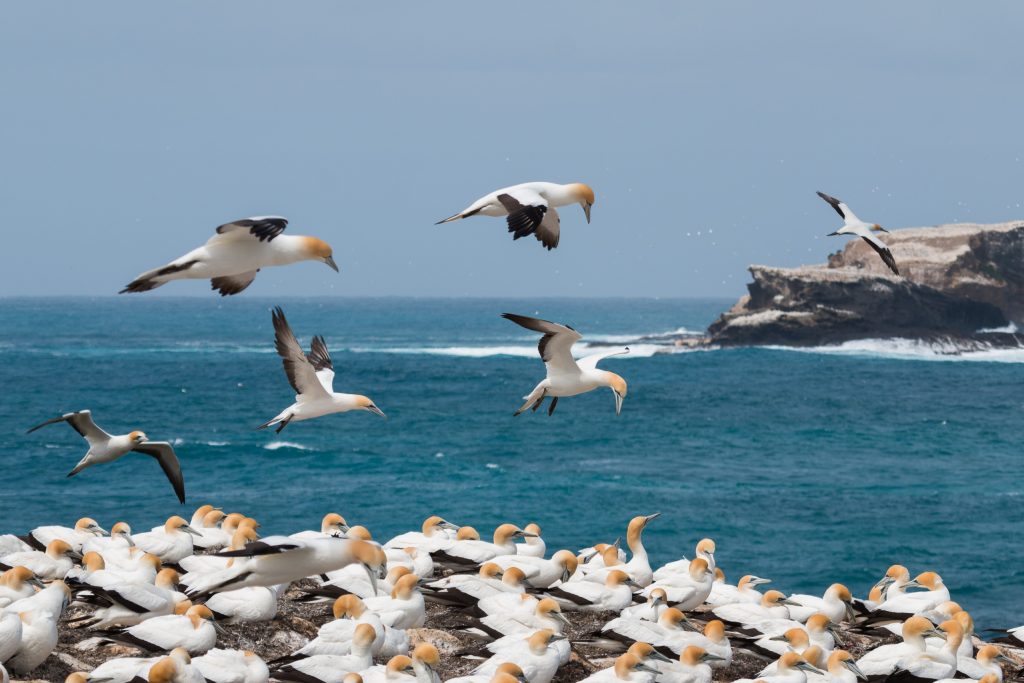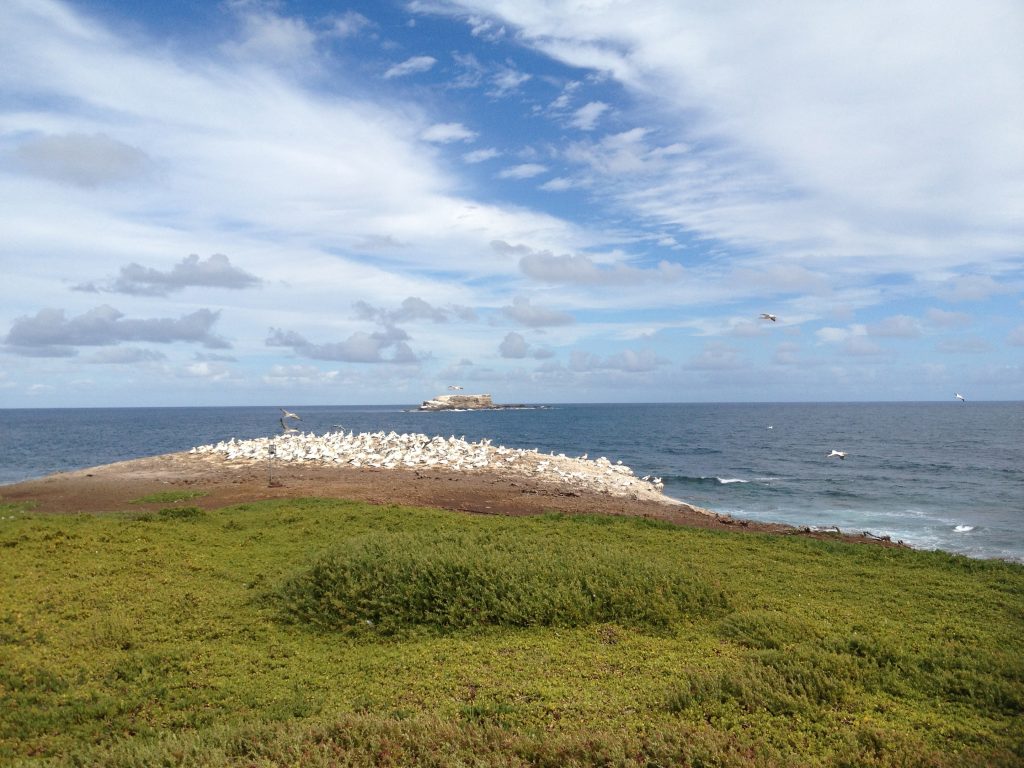
Bird watchers flock to Point Danger to view Australia’s only mainland colony of Australasian Gannets, Located just 6 km out of Portland, the interpretive information and elevated viewing platform can be accessed off Madeira Packet Road, near Portland Aluminium, on a sealed road with a final short gravel section. This dirt road and can be rough at times. (sign posted)
More than 6000 pairs of gannets nest on Lawrence Rocks, 2 km south of the mainland. The mainland colony of 300 pairs is an ideal place to observe birds in all stages of life, from chicks and grey coloured immature gannets, to the mature adult birds with their marvelous wing span and impressive size.
Gannets are nesting and raising young from July to April
Gannets feed on small sea fish like pilchards, and their feed seeking methods are quite a show to watch. It is a wonderful phenomenon to witness hundreds of gannets diving into the sea in succession, targeting a school of fish.Gannets can dive from a height of 30 metres, achieving speeds of 100 km/h as they strike the water, enabling them to catch fish at depths of up to 20 metres much deeper than most airborne birds.
Closer viewing may be had at the Portland Visitor Information Centre on a screen linked directly to the colony. A closer visit to the colony may be arranged by contacting the Portland Visitor information Centre on 1800 035 567
The colony has all ability access

